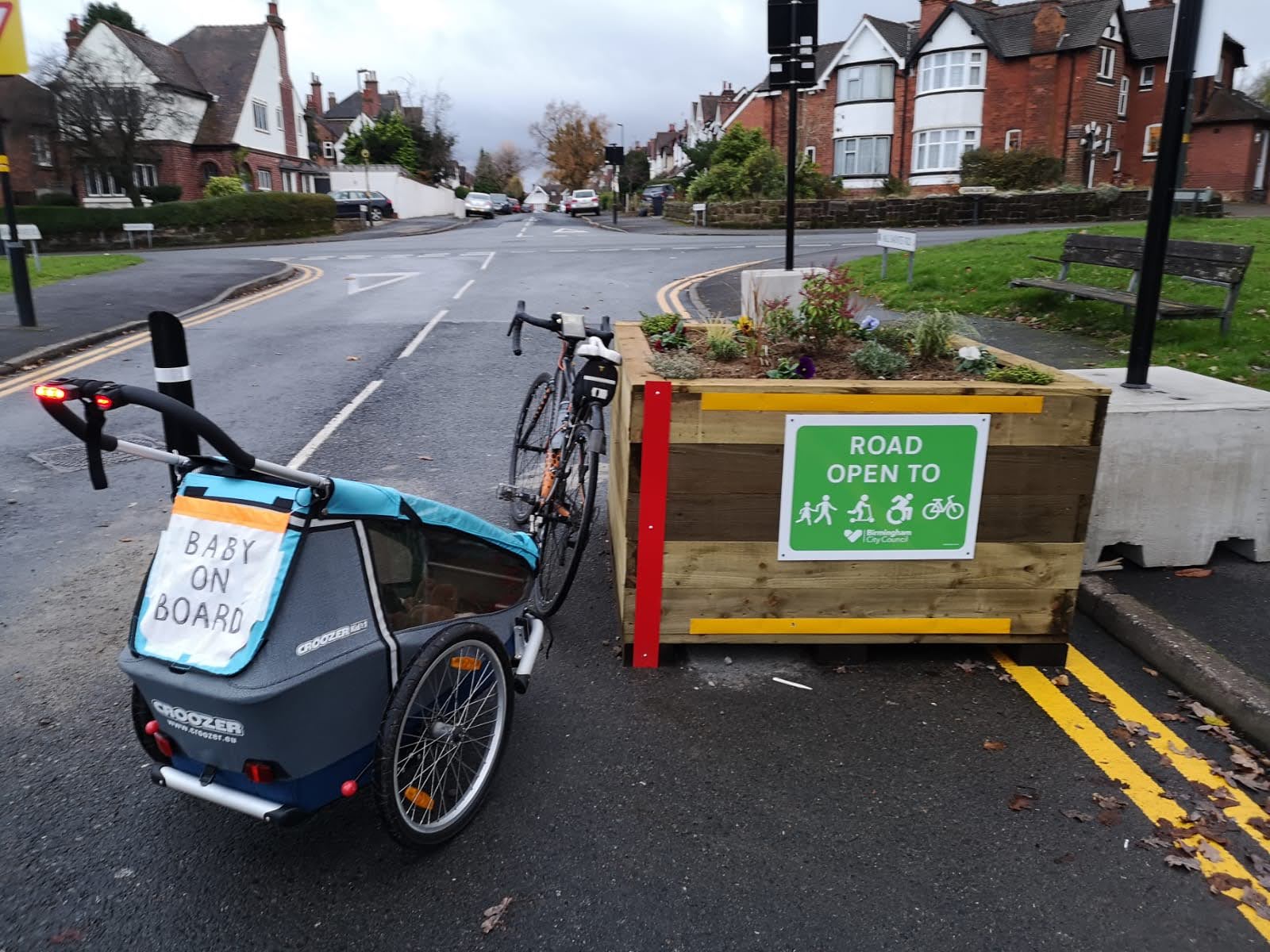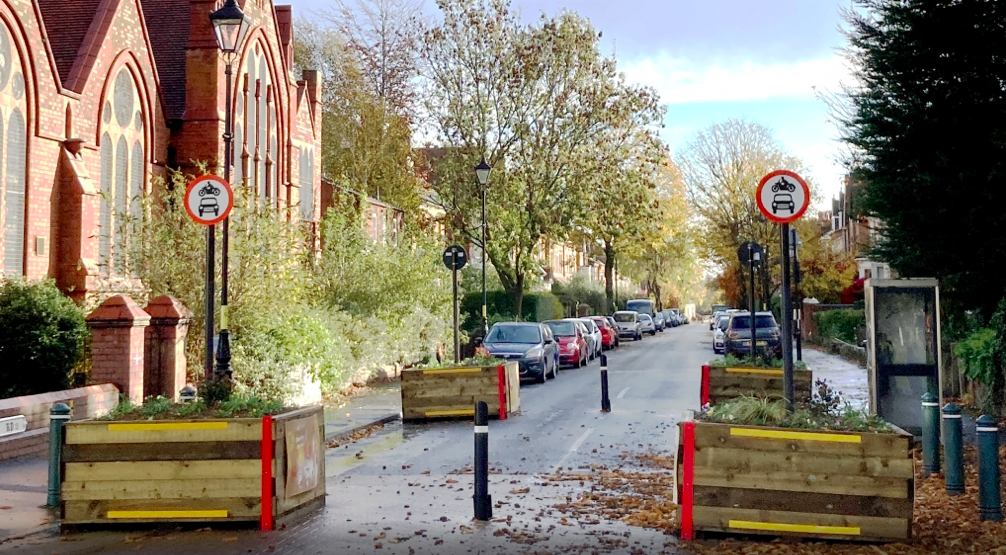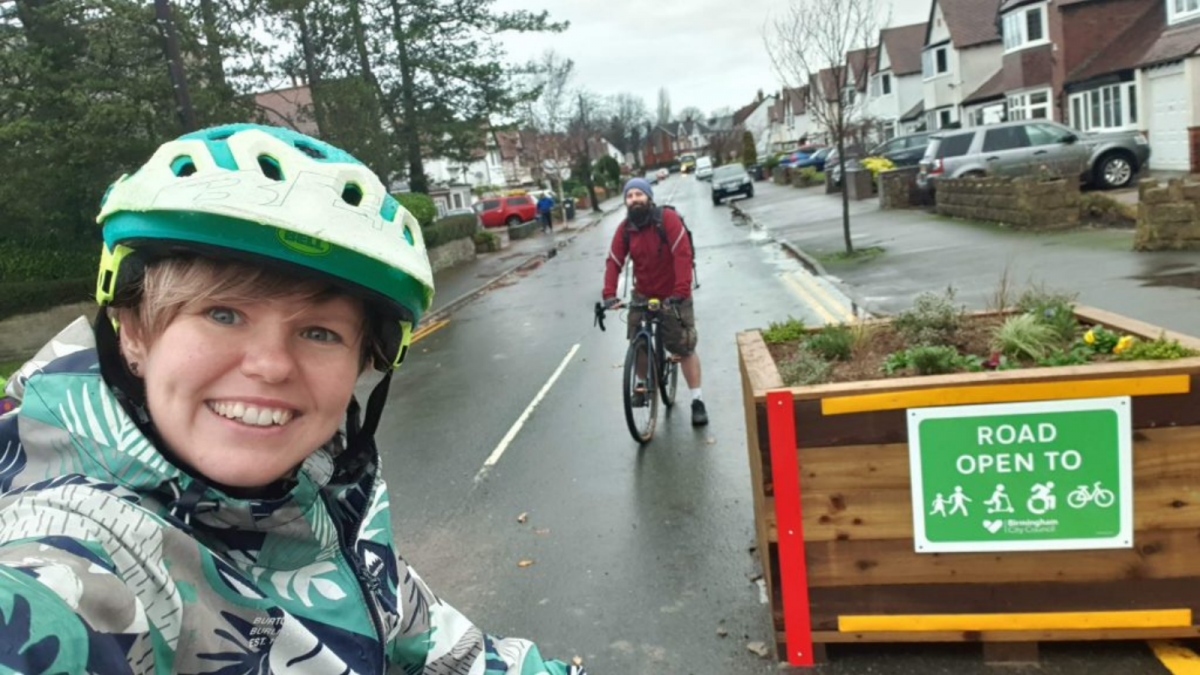As part of the Government’s Emergency Transport Plan, Birmingham is working hard to create places for people. The aim is to reduce traffic and cut out ‘rat-running’ on local streets to create quieter neighbourhoods with cleaner air. Places where communities feel safer, enjoy being outside and find walking, cycling or using public transport more appealing.
Low traffic neighbourhoods (LTN) are part of this project. These are groups of residential streets bordered by main roads where motor vehicles are discouraged to drive through or restricted using ‘modal filters’, examples of these are bollards, wooden planters or boom barriers. These measures are often confused with road closures, however residents can still drive onto their street, have visitors, receive deliveries and are accessible by emergency services.
A LTN isn’t just about blocking access to roads, it’s also about providing safer crossings, improving junctions and cycle routes, along with using space on our streets differently. Where modal filters are used, there’s often a bit of extra space around them for public realm improvements like pocket parks, installing seating in the form of benches or parklets and planting trees.


The Places for People trials in Birmingham are taking place in:
- Kings Heath – LTN pilots are on the western side of Kings Heath High Street, as well as some early demonstration measures with three modal filters between Moseley and Kings Heath.
- Lozells – LTN pilots are in the north and south of Lozells Road, including some no entry points and one-way streets. This will include school street measures with Anglesey Primary School and Heathfield Primary School.
- Castle Vale – Early demonstration measures with two modal filters on Yatesbury Avenue and Cosford Crescent.
- Bournville – Early demonstration measures with two modal filters on Oak Tree Lane and Franklin Road.
- Stirchley/Moseley – Temporary trial measures for local centres including improving road junctions, reallocation of road space enabling social distancing with potential for more cycle parking to encourage local trips by bike.
I was lucky enough to get a guided tour around the LTN trial scheme in King Heath from a local resident, Sush Kelly. He’s been measuring pollution levels daily and has created a great website where you can see these measurements and also lots of useful information about the ongoing changes in Kings Heath https://bit.ly/LTNkingsheath

The day we rode round it was quite a miserable wet day, so as expected there were a lot of motor vehicles on the roads. However, residential streets where modal filters have been put into place were quiet and very pleasant to cycle down. With traffic being directed onto the main roads, they were noticeably busy especially as it was school pick-up time. However, the traffic did flow slowly, and I found a lot of the issues with the traffic we saw were caused by cars parked on corners or yellow lines creating some hold ups.
It was nice to experience the area with the new LTN measures firsthand. I used to live in Kings Heath, above the pet shop on York Road, and like many others I’m a frequent visitor, normally to visit friends at their homes or bars/cafes however. Due to the pandemic I haven’t visited for a while. But this meant the changes were very noticeable. You can see scope for more improvements like more cycle parking, parklets or pocket parks which would be fantastic. I can see how the quieter streets would really allow people to choose active travel for short journeys. I hope the next time I’m in the area it will be for an al–fresco lunch outdoors on York Road where there is now space for local businesses to expand seating outdoors. Perfect for when lockdown restrictions start to ease.

After posting about our ride on Twitter another local resident @RobGilliam replied, commenting on how he missed the rain on the school run with his children on their bikes. However, his ‘wife failed to convince [their] children that it was raining too hard to bike to school and got rather wet’ the following day. I love how these measures are enabling families to choose active travel, and children are learning from an early age that cycling is fun whatever the weather. I am happy and feel reassured to think these children may one day be the decision makers of the future. When I asked for a photo to use for this blog the response I got was ‘you’ve just picked the wrong week – mummy’s working all week so will drop off on her way to work (in the car – boo hiss!) and it’ll be scooters (which I can carry up the hill) not bikes for the journey home until her next day off’ this is what LTN’s are all about, not getting rid of cars but enabling people to feel safe enough on their local streets to choose active travel when they can.
Remember your feedback matters, you can have your say on the transport measures here: https://bit.ly/CommonPlace_HaveYourSay
Some projects are now moving into the next stages. There are links to new relevant surveys via the link above which are definitely worth filling out and will help with the next stage of improvements.
If you would like to share your experiences using any of the new pilot transport schemes please get in touch. We are really interested in what local people think of these temporary measures and if they are helping you choose active travel. Please email [email protected]